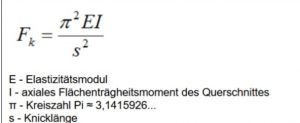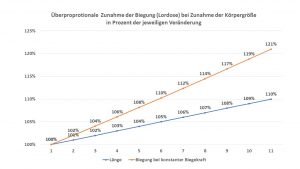- New stuff to read and discuss
- What patients say
- Clinic / online appointments
- Why the diagnosis of a psychosomatic illness is often a misdiagnosis
- Vascular Compression Syndromes
- Do you have questions?
- Checklist vascular compression syndromes
- Description of your symptoms
- Researchers from the Mayo Clinic confirm my concept of the Midline Congestion Syndrome
- Explanation of gender-specific differences in the clinical symptoms of abdominal vascular compression syndromes: varicocele and penile/testicular pain – their main manifestation in men.
- Varicocoele is predominantly caused by left renal vein compression
- Musculoskeletal pecularities of female puberty
- Lordosis /Swayback- Origin of many abdominal compression syndromes
- Bending of a straight vein compels its narrowing
- The lordogenetic midline congestion syndrome
- Neurological consequences of the midline congestion syndrome
- Successful treatment of a teenage girl who was unable to eat due to extreme postprandial pain and unable to walk due to spasticity in her left leg
- Severe ataxia in a young woman with severe spinal congestion – complete resolution after decompression of the left renal vein
- All compression syndromes are one: the spectrum of lordogenetic compressions
- Nutcracker-Syndrome is a misnomer! Lordogenetic left renal vein compression is a more appropriate name!
- May-Thurner-constellation (May-Thurner-syndrome, Cockett’s syndrome)
- Midline (congestion) syndrome
- Pelvic congestion syndrome
- Celiac Trunk Compression / Dunbar syndrome / MALS / Arcuate ligament syndrome
- Wilkie-Syndrome / Superior-mesenteric-artery-syndrome
- Compression of the vena cava inferior
- Evlauation of vascular compressions with the PixelFlux-method
- Connective tissue disorders predispose to multiple compressions
- Postural tachycardia syndrome (POTS) – the hemodynamic consequence of vascular compression syndromes and loose connective tissue
- Restless legs-a little known symptom of abdominal vascular compression syndromes
- Pudendal neuralgia in vascular compression syndromes
- A new sonographic sign of severe orthostatic venous pooling
- Migraine and Multiple Sclerosis
- Hemodynamic effect on cerebral perfusion in patients with multiple localised vascular compression.
- Treatment of vascular compression syndromes
- Fatal errors in the treatment of vascular compression syndromes
- Risks of stents in venous compression syndromes
- Surgical treatment of abdominal compression syndromes: The significance of hypermobility‐related disorders
- Nutcracker and May-Thurner syndrome: Decompression by extra venous tube grafting and significance of hypermobility related disorders
- Our surgical treatment of vascular compressions
- Chronic regional pain syndrome (CRPS) caused by venous compression and mechanical irritation of the coeliac plexus
- Vascular compression syndromes I recently detected
- Kaleidoscope of instructive cases
- Ultrasound Diagnostics
- Profile
- Functional colour Doppler ultrasound – how I do it
- Perfusion Measurement – PixelFlux-method
- Research
- Publications
- Nutcracker and May-Thurner syndrome: Decompression by extra venous tube grafting and significance of hypermobility related disorders
- Papers authored by Th. Scholbach
- Publications
- Inauguration of measurements of the tissue pulsatility index in renal transplants
- From nutcracker phenomenon to midline congestion syndrome and its treatment with aspirin
- First sonographic tissue perfusion measurement in renal transplants
- First sonographic bowel wall perfusion measurement in Crohn disease
- First sonographic renal tissue perfuison measurement
- First sonographic measurement of renal perfusion loss in diabetes mellitus
- PixelFlux measurements of renal tissue perfusion
- Why I prefer not to publish in journals but in the Internet
- Vessel stretching in nephroptosis – an important driver of complaints
- Publications
- Expertise
- Bornavirus Infection
- Scientific cooperation
- Cookie Policy
- Data protection
- Cookie Policy (EU)
- Impressum

Lordosis development
The multiple curvatures of the spine are not congenital but develop as infants start walking. Human embryos and newborns have a simple arc-shaped curvature of the spine along their entire length.
As children start walking, gravity affects the shape of the spine. In an upright posture, which is increasingly adopted from infancy onwards, gravity compresses the spine. This causes curvatures of the spine. Their extent depends on the length of the spine and its elasticity.
This was first described for a simple rod as which the spinal column is to be considered here, by Leonhard Euler, the famous Swiss mathematician, . He distinguishes four different cases of bending a rod under the longitudinal action of a force. The second Euler’s case applies to the human spine, in which lateral deflection is possible at both the base and the tip of the rod.
The critical Euler’s buckling force, Fk, is the force under which a certain rod suddenly buckles after having previously bent.
The more resistance a material offers to deformation, the greater the modulus of elasticity E. A component made of a material with a high modulus of elasticity (e.g. steel) is therefore stiff, while a component made of a material with a low modulus of elasticity (e.g. rubber) is yielding.
In the case of the human spine, the buckling force is the gravitational force. Its effect on the deflection of the spinal column thus depends on the elasticity E of the spinal column, which decreases with age, on the axial geometrical moment of inertia of the cross section, which remains essentially constant in adults, since this parameter depends on the broadth/width ratio of the vertebral bodies, and very much on the buckling length, which corresponds to the length of the spinal column. This means that the bending of the spinal column is influenced quadratically with increasing body length. In other words, the growth of the body length has a squared effect on the development of lordosis.
During growth to adulthood, it can be roughly assumed that the elasticity of the spinal column decreases only slightly; the moment of inertia per unit area also remains the same if the aspect ratio of the vertebral body cross-section does not change, which can be assumed. With a linear decrease in elasticity and a quadratic effect of increasing body length, adolescents therefore experience increasing lordosis during growth, especially during puberty, when they grow faster than usual.
The linear increase of the length of the spinal column leads to a quadratic decrease in bending force. However, since the bending force, in this case the gravitational force, remains constant, the deflection of the spine, i.e. the extent of the lordosis increases per squared increase of the length of the spinal column .
This means that taller people have a higher risk of developing a stronger lordosis. The extent of lordosis increases in comparison to another person with the same spinal elasticity not only linearly to the length of the spine but squared, if E and I remain constant.
Genetic connective tissue diseases have a particularly strong effect on the elasticity, which therefore also lead to a stronger lordosis and frequently to scoliosis as well.


